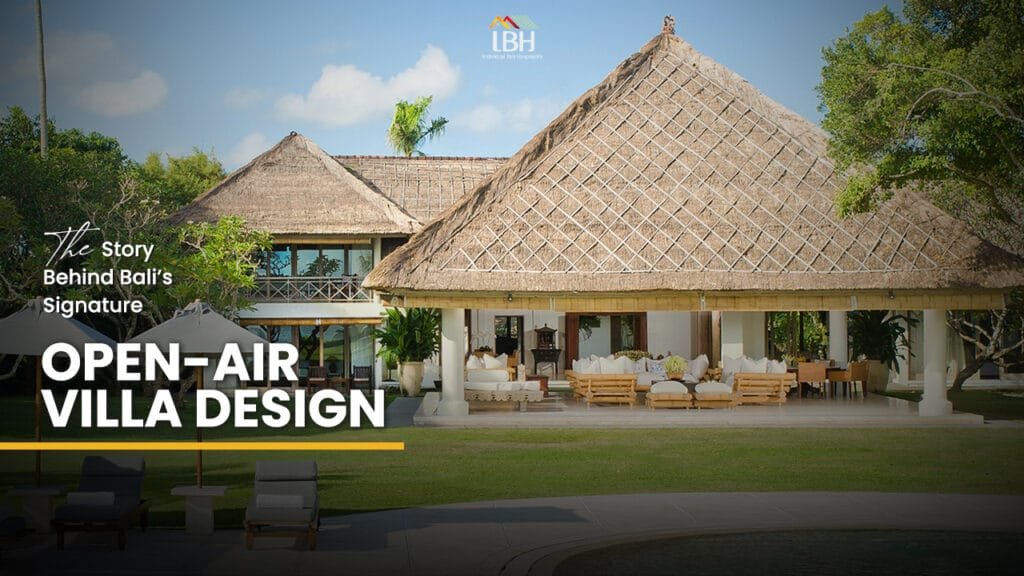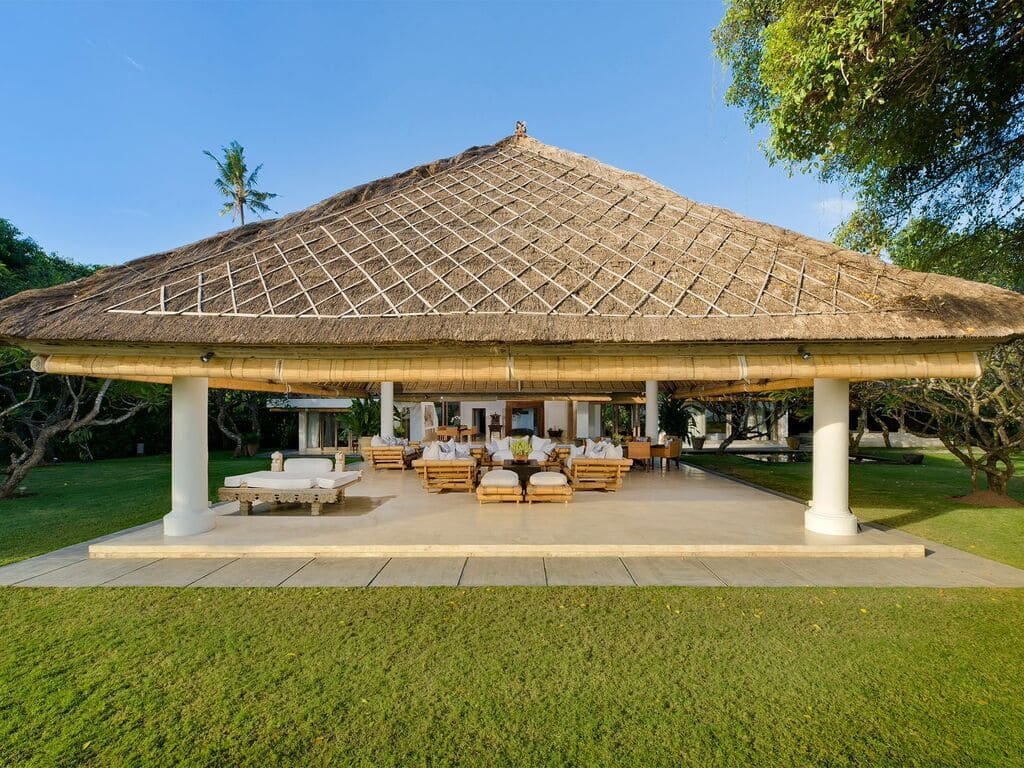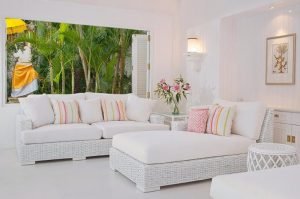Bali never runs out of ways to captivate visitors. Beyond its beaches, terraced rice fields, and vibrant culture, one element makes the island truly stand out: its villas. Almost every villa in Bali embraces the open-air style, with living rooms without walls, bathrooms under the sky, and swimming pools that flow seamlessly into tropical gardens.
For many, this design feels exotic or even unusual. But in reality, the open-air style is not just a modern trend. It is the result of centuries of tradition, deep-rooted Balinese philosophy, adaptation to the tropical climate, and an evolving sense of aesthetics.
And this is exactly why so many villas in Bali are designed in an open-air style—because each space is more than just a place to stay, it’s an invitation to live in harmony with nature.
Table of Contents
- 1. Historical Roots and Balinese Architectural Heritage
- 2. The Philosophy of Tri Hita Karana
- 3. Adaptation to the Tropical Climate
- 4. An Immersive Connection with Nature
- 5. Aesthetic Value and Social Function
- 6. Balancing Tradition with Modern Comfort
- 7. The Rise of Sustainable Architecture
- Experience it with Individual Bali
1. Historical Roots and Balinese Architectural Heritage
Balinese architecture has long been guided by Asta Kosala Kosali, a traditional set of principles that dictate how houses, temples, and pavilions are arranged. These rules are not merely technical; they also carry spiritual meaning.
A traditional Balinese home is made up of several bale (pavilions) surrounding a central courtyard. Each pavilion serves a different purpose, such as the bale daja (north pavilion) for the head of the family or the bale dangin (east pavilion) for ceremonies. Most importantly, these pavilions are built open, without walls, allowing residents to live in constant connection with the world outside.
2. The Philosophy of Tri Hita Karana
The open-air style also reflects the Balinese philosophy of life: Tri Hita Karana. This principle highlights harmony between three key relationships:
- Parahyangan – humans with God
- Pawongan – humans with fellow humans
- Palemahan – humans with nature
Open-air spaces allow these relationships to coexist beautifully. Sunlight and fresh air flow through every corner (nature), communal areas encourage conversation and connection (humans), while sacred zones are carefully preserved (God).
3. Adaptation to the Tropical Climate
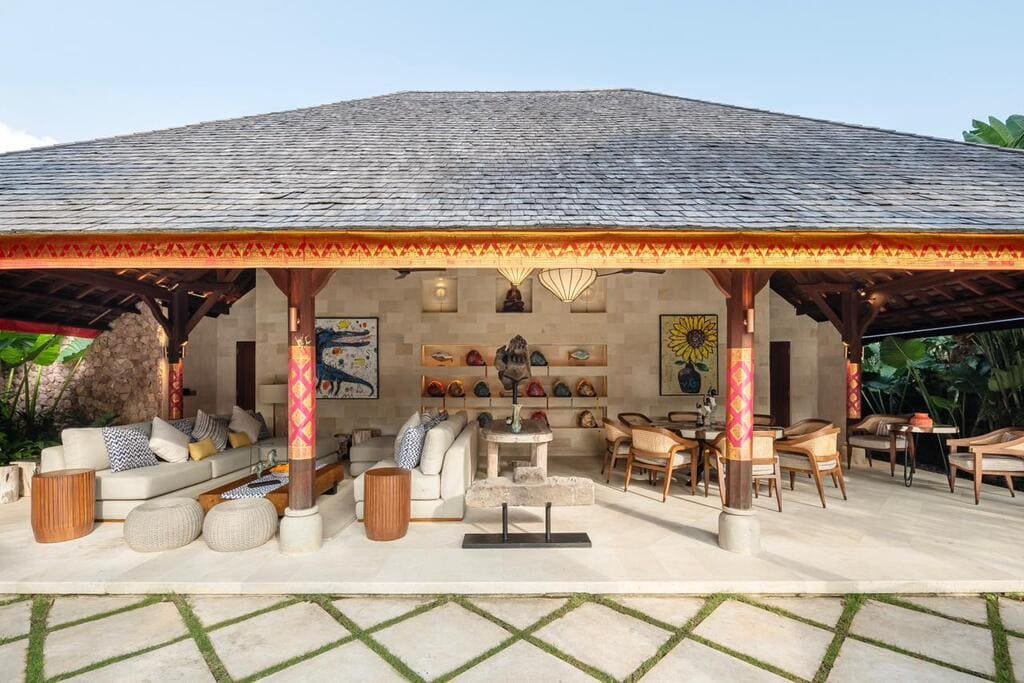
Bali’s tropical climate, with average temperatures between 27–30°C, high humidity, and seasonal rainfall, makes enclosed designs less practical.
The open-air concept is a natural solution to this. High ceilings and open layouts create cross-ventilation, keeping spaces cool and breezy. This reduces the need for air-conditioning while making daily living more comfortable and sustainable.
4. An Immersive Connection with Nature
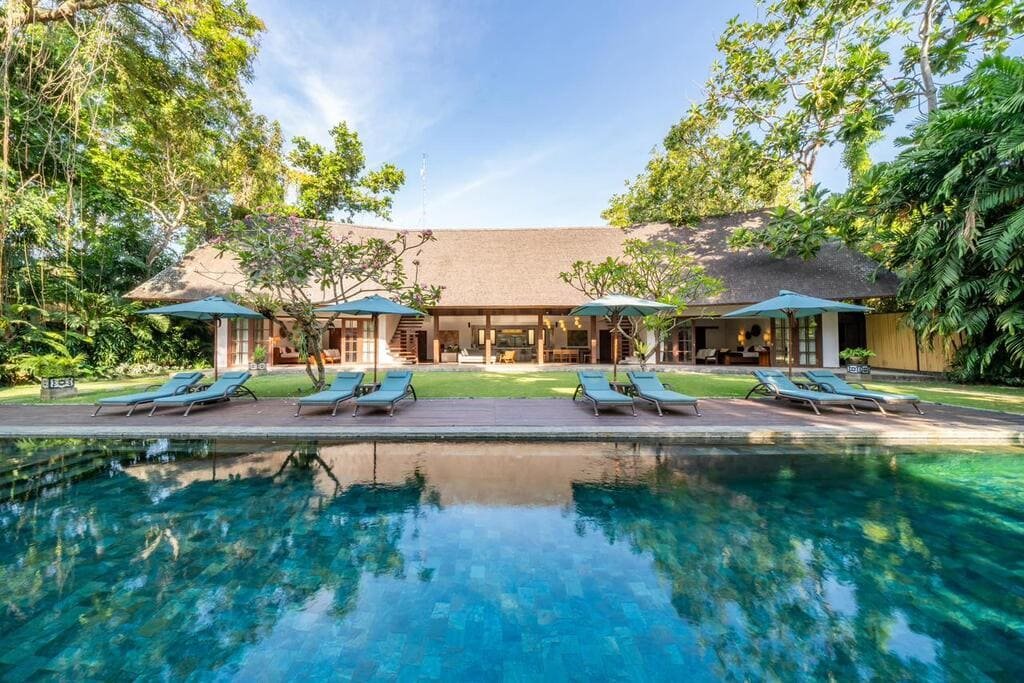
One of the most magical experiences of staying in a Balinese villa is the intimacy with nature. Imagine sitting in an open-air living room, listening to crickets at night, hearing distant gamelan melodies, or feeling the breeze rolling in from the rice fields.
Many villas also feature open-air bathrooms, where you can shower under the morning sun or the stars at night. For international travelers, this is an unforgettable experience, something they rarely encounter back home. No wonder open-air bathrooms have become one of the signature features of Balinese villas.
5. Aesthetic Value and Social Function
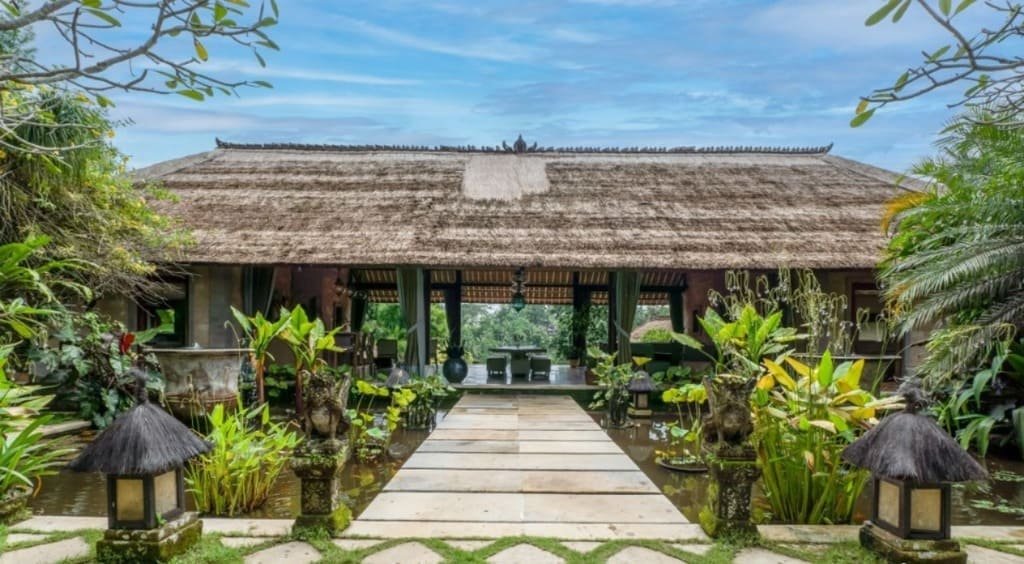
Open-air design is not only practical but also beautiful. Spaces feel larger and flow directly into gardens or pools, creating a sense of freedom and relaxation.
This design also reflects the communal spirit of Balinese culture. Traditionally, families and communities gather in open spaces for ceremonies and celebrations. Modern villas continue this tradition by offering open living areas that are perfect for family moments, romantic getaways, or fun with friends.
6. Balancing Tradition with Modern Comfort
While villas in Bali honor open-air traditions, they are not without modern comforts. Bedrooms often feature air-conditioning, sliding glass doors, and curtains for privacy. Bathrooms and kitchens are fully equipped, while interiors bring together natural materials like teakwood and bamboo with contemporary furniture.
This balance allows guests to enjoy the authentic Balinese atmosphere while still feeling the comfort of modern luxury.
7. The Rise of Sustainable Architecture
The open-air concept also naturally supports sustainability. By maximizing natural light and ventilation, villas use less energy. Many newer villas also feature eco-friendly materials such as bamboo, volcanic stone, or reclaimed wood. Bali has even become a source of inspiration for architects around the world, showing how tropical architecture can be both beautiful and sustainable.
Experience it with Individual Bali
The seven points above explain why Balinese villas are so closely associated with the open-air style. It is more than just architecture; it is a way of life that preserves harmony with nature, culture, and modern comfort.
At Individual Bali, we bring this heritage to life through our handpicked collection of Balinese-style villas. Each villa is designed to combine tradition with contemporary amenities, making it perfect for a honeymoon, a family holiday, or a group retreat.
Discover the villa that matches your dream Bali experience by exploring our collection at www.individualbali.com
.

